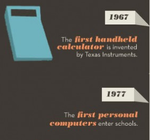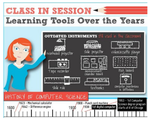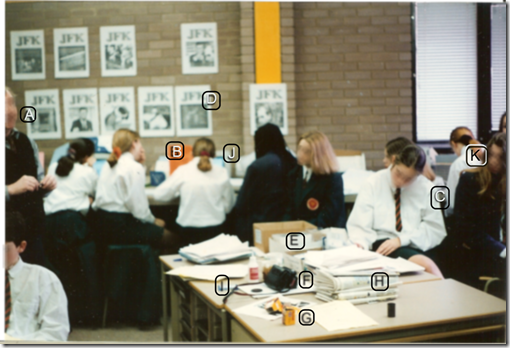The music programme of study requires students to possess an understanding of the music they perform and that which they listen to, as well as a grasp of music history, and an appreciation of different musical styles.
Read MoreHitler's People: The Faces of the Third Reich -- Extended review
Nearly a hundred years after the Nazi phenomenon people are still asking the question: how could apparently ordinary or, in some cases, highly cultured, people commit such terrible crimes.
Read MoreReview: The Book at war
The Book at War is a fascinating study of how books and other reading matter have variously influenced politics, propaganda and history over time.
Read MoreResources, copyright, useful tips for using education technology in the classroom
This issue of my Computers in Classrooms newsletter, dates from 2001. I am reproducing these newsletters partly in order to make sure that some of the history of using education technology is preserved, and partly because some of it is still relevant. That applies especially to the Tips section.
Read MoreOfsted, National Curriculum and other edtech stuff
This newsletter, from 2001, demonstrates four main things….
Read MoreDid you know Google was a search engine, preparing for Bett 2001, plus guidance that has stood the test of time
Back in the year 2001 Google was still very much the new-ish kid on the block.
Read MoreOn This Day, by Terry Freedman
On this day #14: Enforced independence
For those of us who are bemused by the Department for Education’s new-found interest in digital matters (starting in 2019 with their Education Technology strategy), this might be of interest.
Read MoreHave Ada Lovelace in your Computing or education technology classroom
Help to bring education technology alive by introducing a letter from Ada Lovelace to Charles Babbage into your Computing or education technology classroom.
Read MoreR.I.P. Micro Mart
The UK's weekly computing magazine, Micro Mart, has just published its last issue. This article looks at what made it so good.
Read MoreA blast from the past.
ICT, Computing, Education Technology -- what's in a name?
Discussions about naming things like subjects and schools can seem slightly amusing in retrospect. And sometimes the present seems like a distant echo of the past.
Read MoreIt's all about setting up the right conditions. Photo from Pixabay.com CC0
My best and worst IT lessons #2: The history lesson
What were the elements that made a history lesson (in a computer lab) about JFK so good?
Read MoreWhat will we leave behind?
A history of data storage and recovery
I once mentioned to the kids I was teaching how useful I found having CD-ROMs to store stuff on. “What?!”, they said. “You had CDs back then?”
Young people always seem to have a working assumption in life that the technology they use only came into existence when they did. Anything else is ancient history. With that in mind, perhaps your pupils will find the infographic below useful and interesting. It charts the development of data storage and recovery from the time of Babbage, in 1834. Along the way there are interesting articles, photos and videos.
The Evolution of Educational Technology
 Here’s an interesting infographic which looks at how educational technology has changed over the centuries. I think it’s always interesting to provide students with some history of the subject it didn’t all start with iPads!
Here’s an interesting infographic which looks at how educational technology has changed over the centuries. I think it’s always interesting to provide students with some history of the subject it didn’t all start with iPads!Learning tools over the years
 Here’s an interesting infographic which looks at how the technology used in the classroom has changed over the years (or remained pretty much the same!). The only one of the “outdated instruments” I never used was a slide rule! How many of these do you remember? And please don’t send me messages along the lines of “Before my time, Terry.” I feel ancient enough when I look at things like this already! The infographic includes the history of Computer Science.
Here’s an interesting infographic which looks at how the technology used in the classroom has changed over the years (or remained pretty much the same!). The only one of the “outdated instruments” I never used was a slide rule! How many of these do you remember? And please don’t send me messages along the lines of “Before my time, Terry.” I feel ancient enough when I look at things like this already! The infographic includes the history of Computer Science.In The Picture: History Lesson
Here’s a photo that was taken circa 1990. It shows a history lesson in progress, in one of the computer rooms. This is the sort of lesson I really like. As you can tell from looking at the picture, which was unposed, all the kids are fully engaged. The history teacher can be seen to the left of the photo, almost out of shot – literally a guide on the side. The topic, as you may have gathered, is the assassination of President John F. Kennedy, and the students, who were 14 at the time, were using a variety of sources, both digital and paper.
I’ve annotated the photo with letters. Here’s what they indicate.
A: The history teacher.
B Two girls collaborating on researching a database.
C Girl making notes on her findings, on paper, for use in a presentation later.
D Screenshots from the JFK database showing photos that were taken at the time.
E You can’t see it very well, but that’s a box of printer paper for use in a dot matrix printer. The paper was a ream of pages joined up and perforated, like toilet paper, with sprocket holes down the sides.
F A camera. I used to use cameras in my lessons to capture what went on. Note that this was pre-digital camera days, so the camera took…
G … Film.
H Newspapers, just one of several types of resources we used in the lesson.
I It’s not very clear, but that’s a 3.5” so-called “floppy disk”. That one could hold around 740 kilobytes of data.
J A monitor. It looks very quaint now, but I’d equipped the room with Atari ST computers. Although mainly associated with games, there was a range of office and educational applications available. All the programs shared common menus, which made it very easy to learn new applications – remember, this was around the time of Windows version 1. The monitors were high definition, with black text on a white background, unlike certain other computers at the time. They were fast too.
K As far as I can tell, this is one of only two girls in the entire class who was actually listening to the teacher at the time; well, be fair: they had work to do!
If you think I’ve missed some bits which need explaining, please let me know.And please let me know if you find this sort of thing interesting.
An Email Retrospective
I was looking for a particular video I made, to illustrate an article about the forthcoming edition of Computers in Classrooms (the fantastic free newsletter available only from this website), when I came across this video about email.
I think it was the first video I ever made for the internet, and as it was my first attempt I got the video settings wrong. In addition, there was no script, just Elaine and I looking through old emails to see if anything had changed. It was our way of celebrating ten years on the web, back in 2005 (it's ok, I know: we really do need to get out more).
Anyway, it's so boring that it's quite funny. Well, I think so anyway.
It includes one of those awful spam emails which contain just random sentences, except that back in 2005 I don't think I'd quite cottoned on to the fact that it was spam.
Elaine had suggested a friendly wager, that the emails would reveal that nothing had changed over ten years. I think I would say that she won.
I'll leave you with one final thought: what can be sadder than the fact that in 2005 I still had emails going back to 1996? How about the fact that, five years later, I've still got them?!
Well, we all need a hobby.
On a more serious note, I do find it interesting, every few years, to look through old emails to find out what I was concerned with, and what the burning issues of the day were. We lose too much personal and organisational history in today's ephemeral society, which is a pity: it's good to reflect on the journey now and again.
Vlog01.mpg
Uploaded by terryfreedman.






